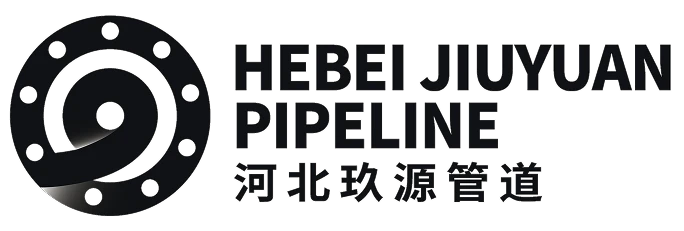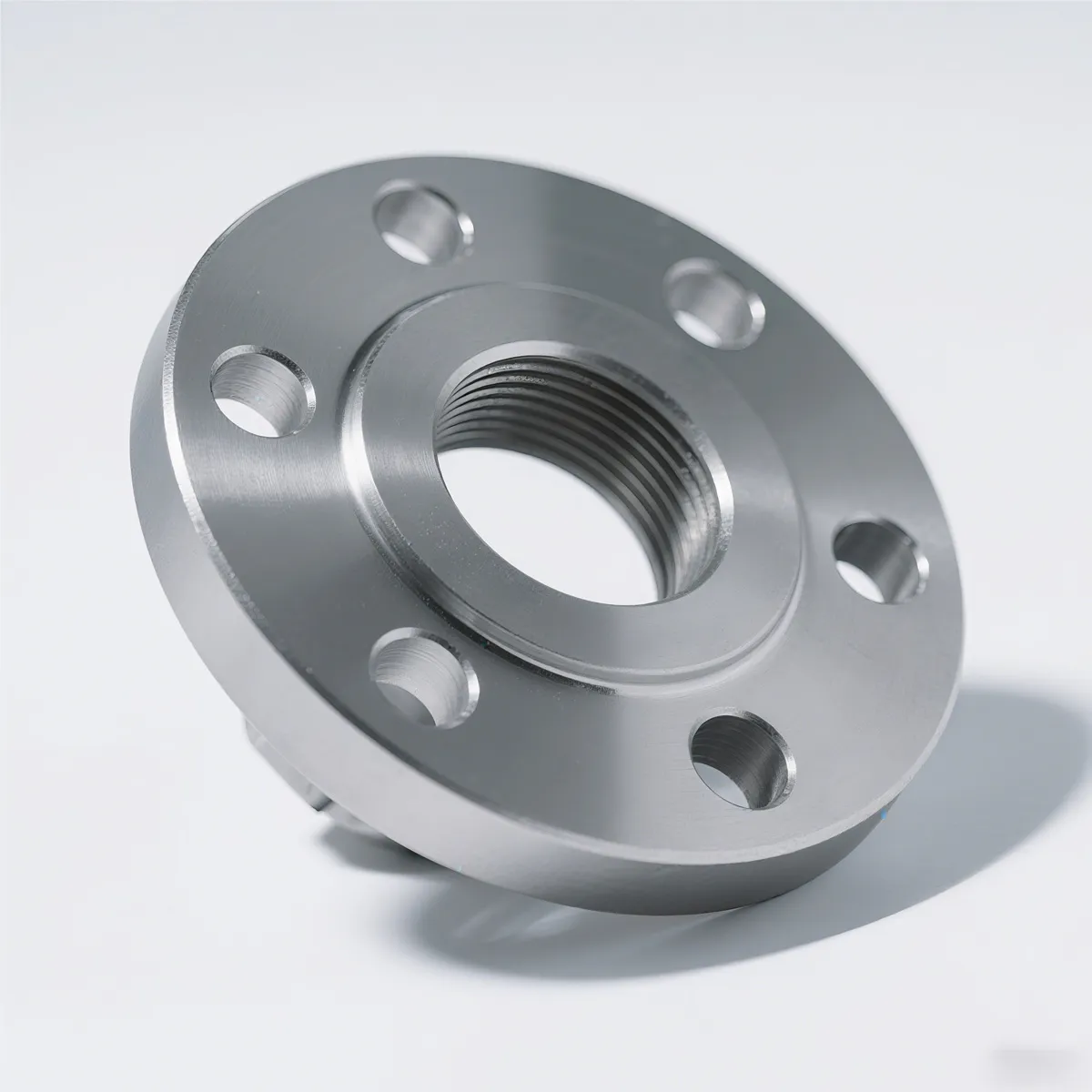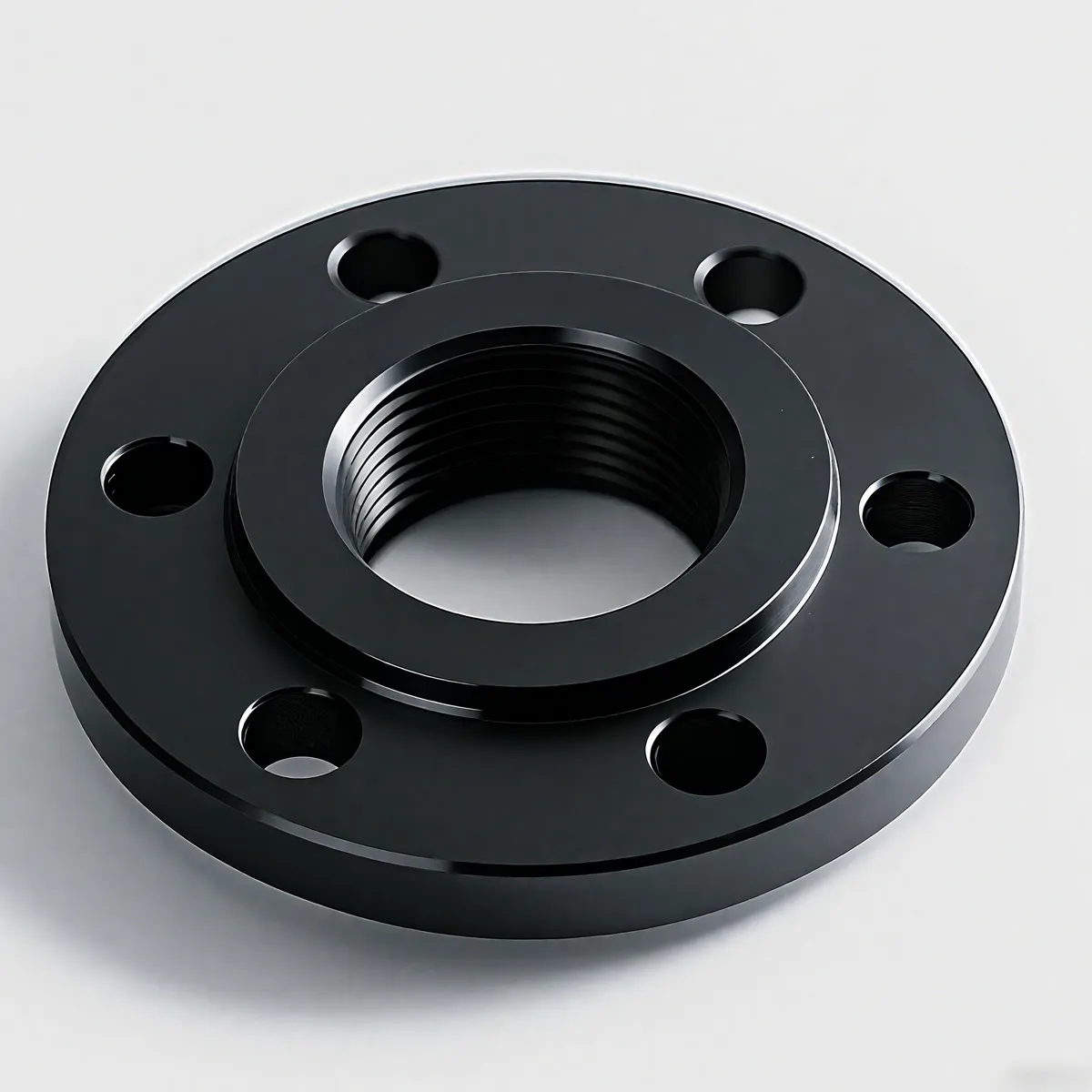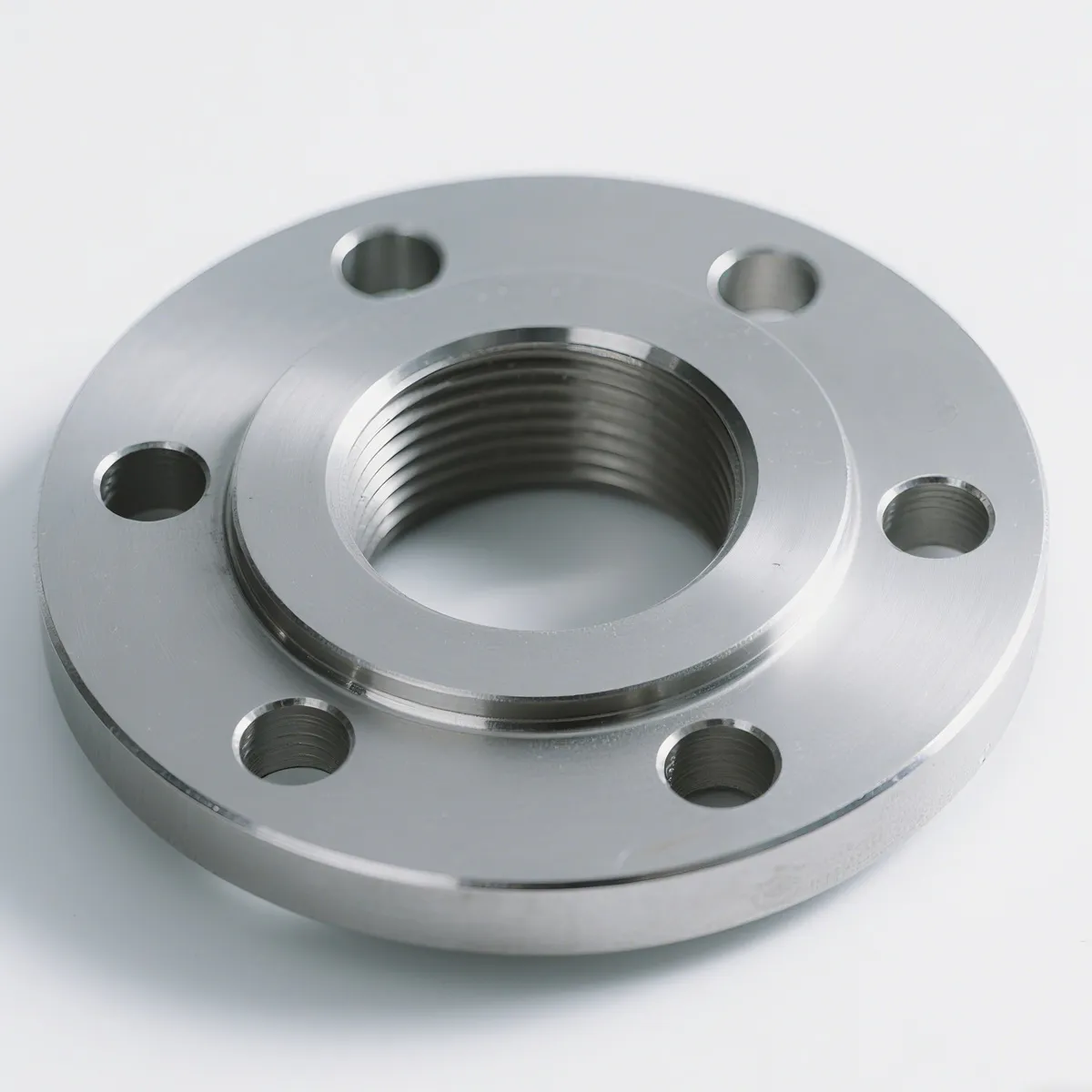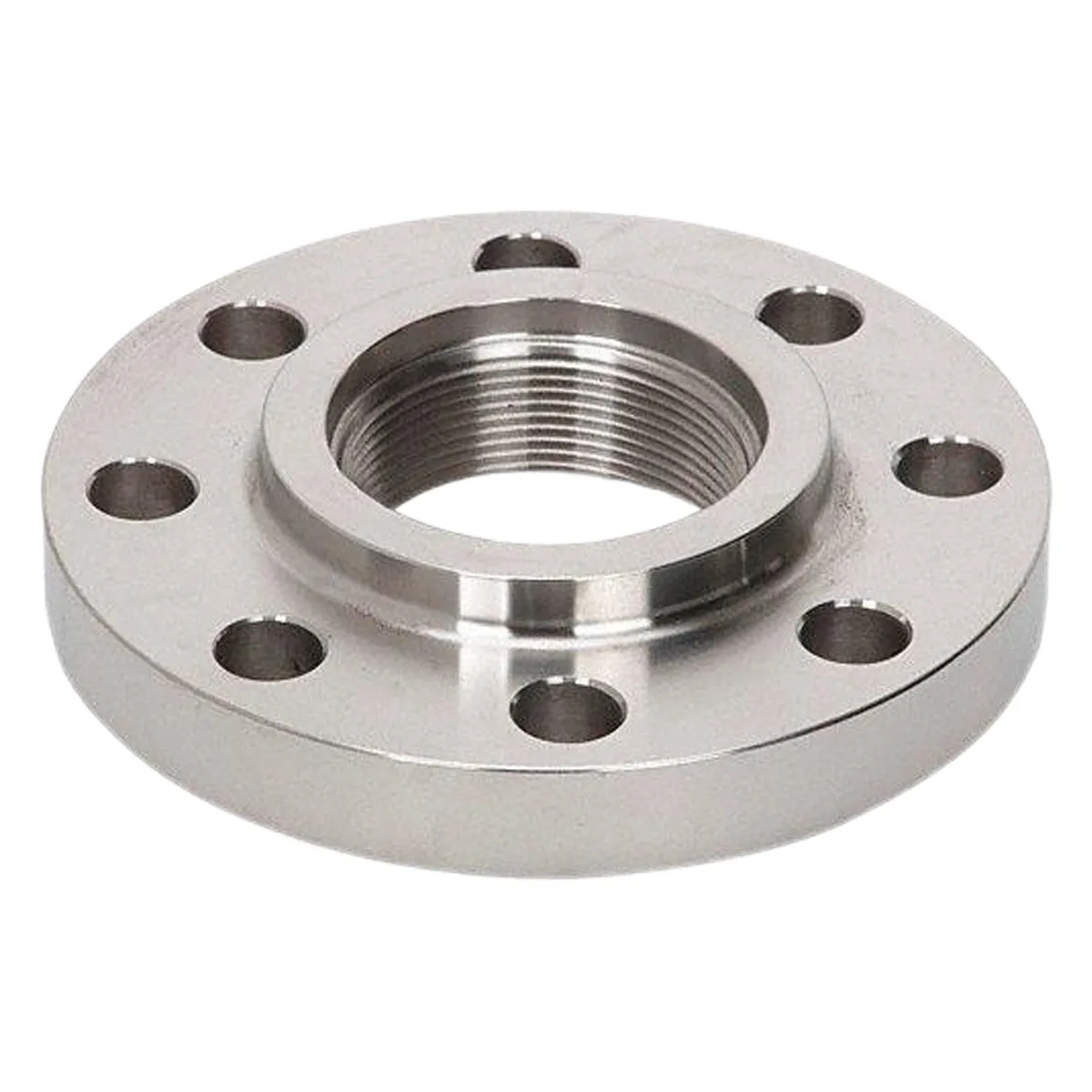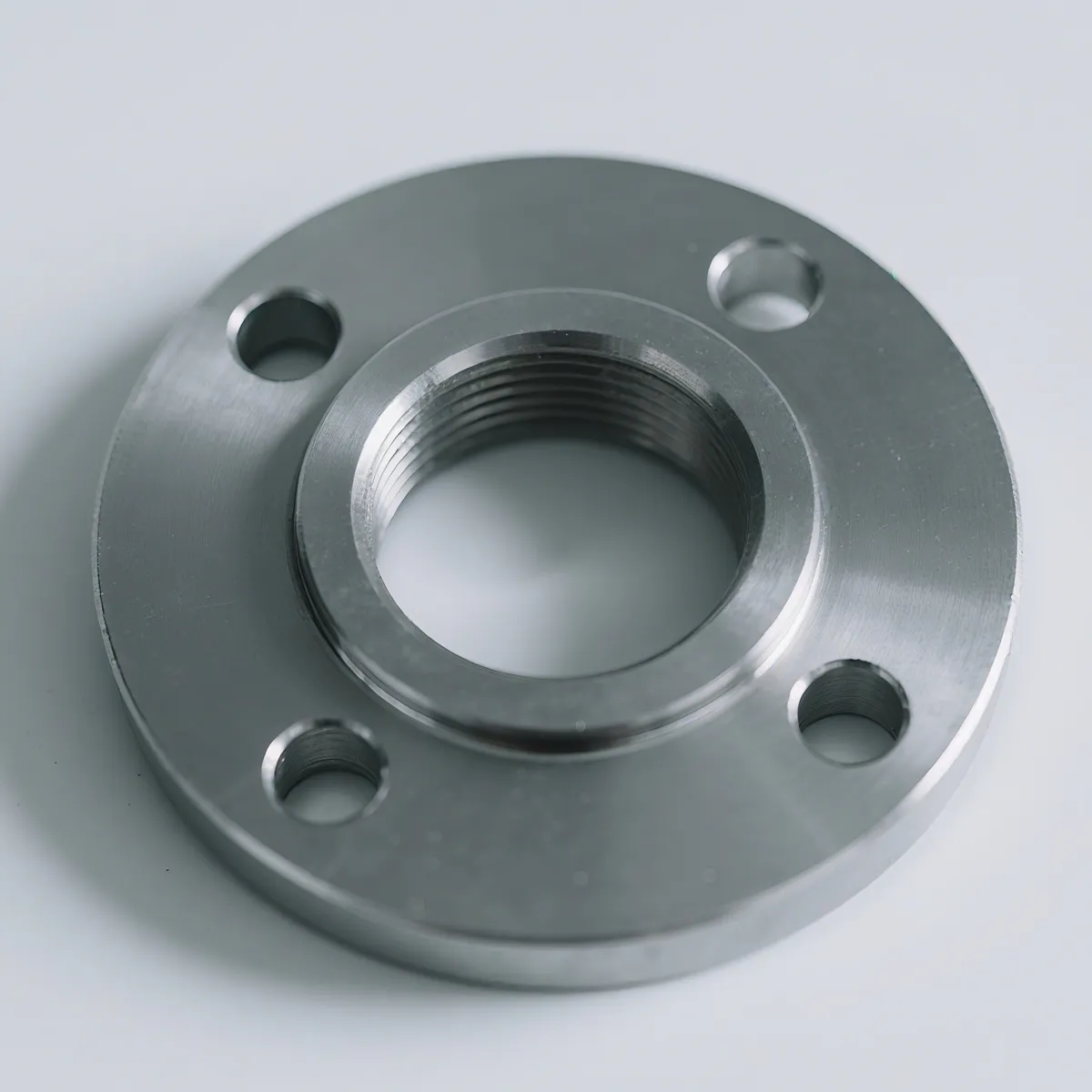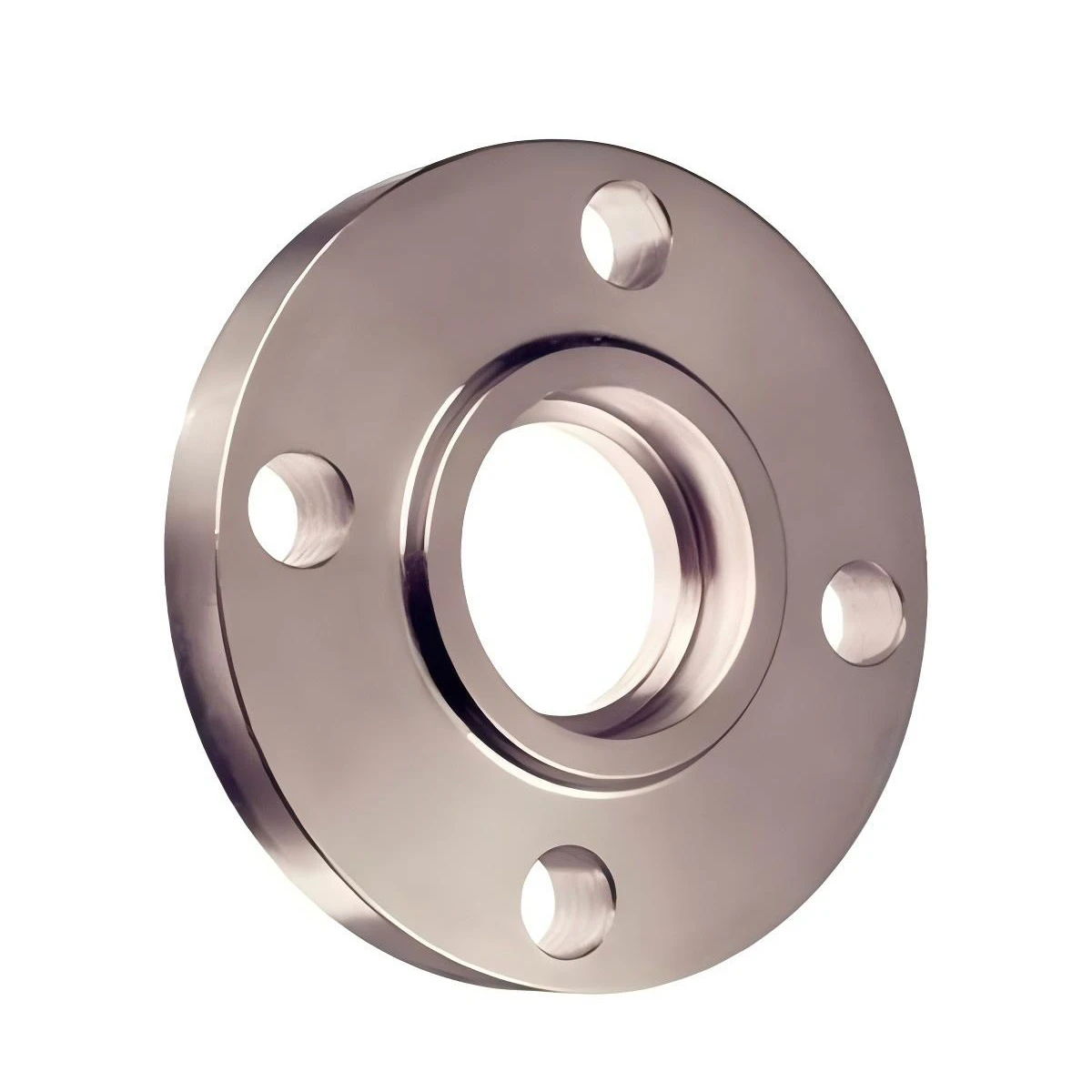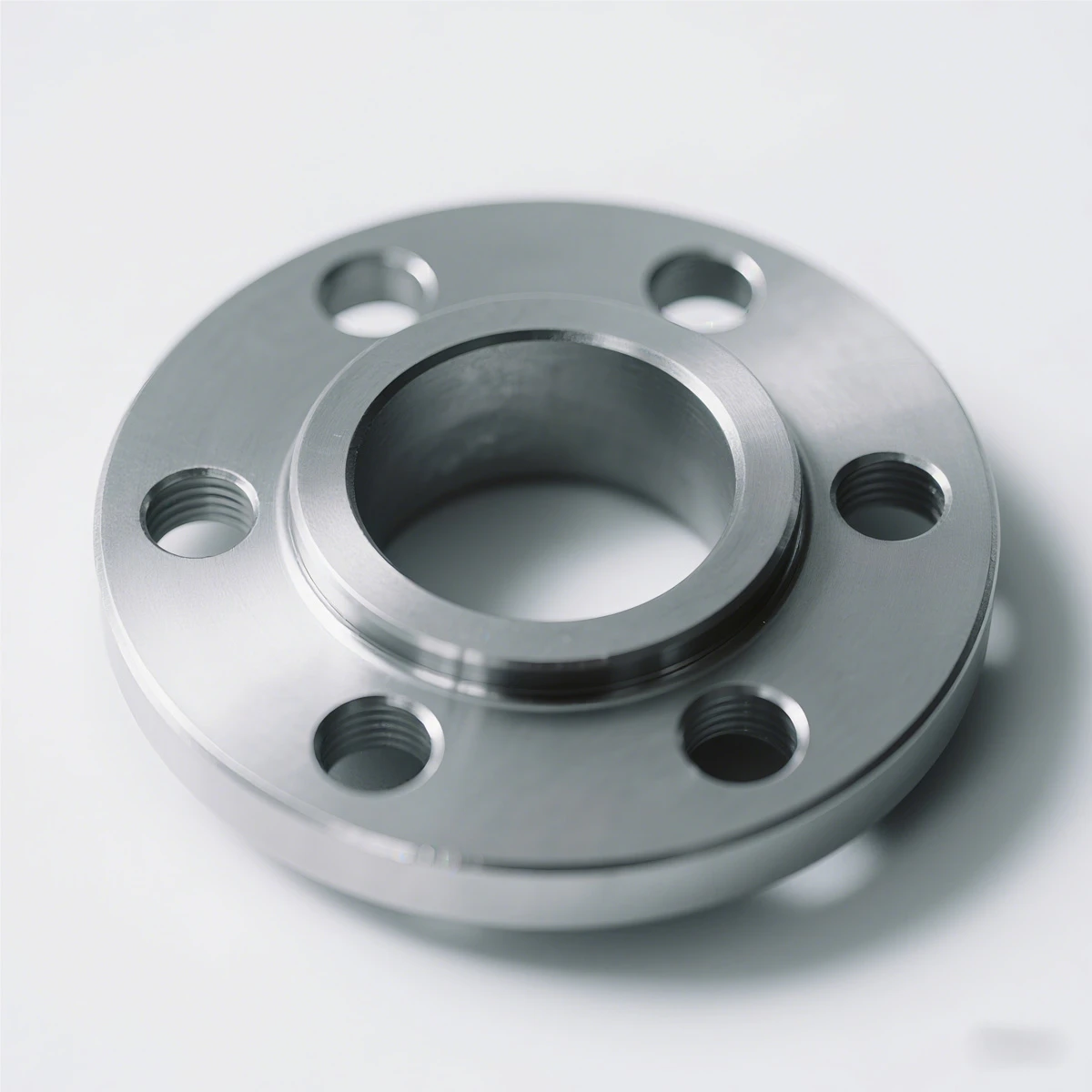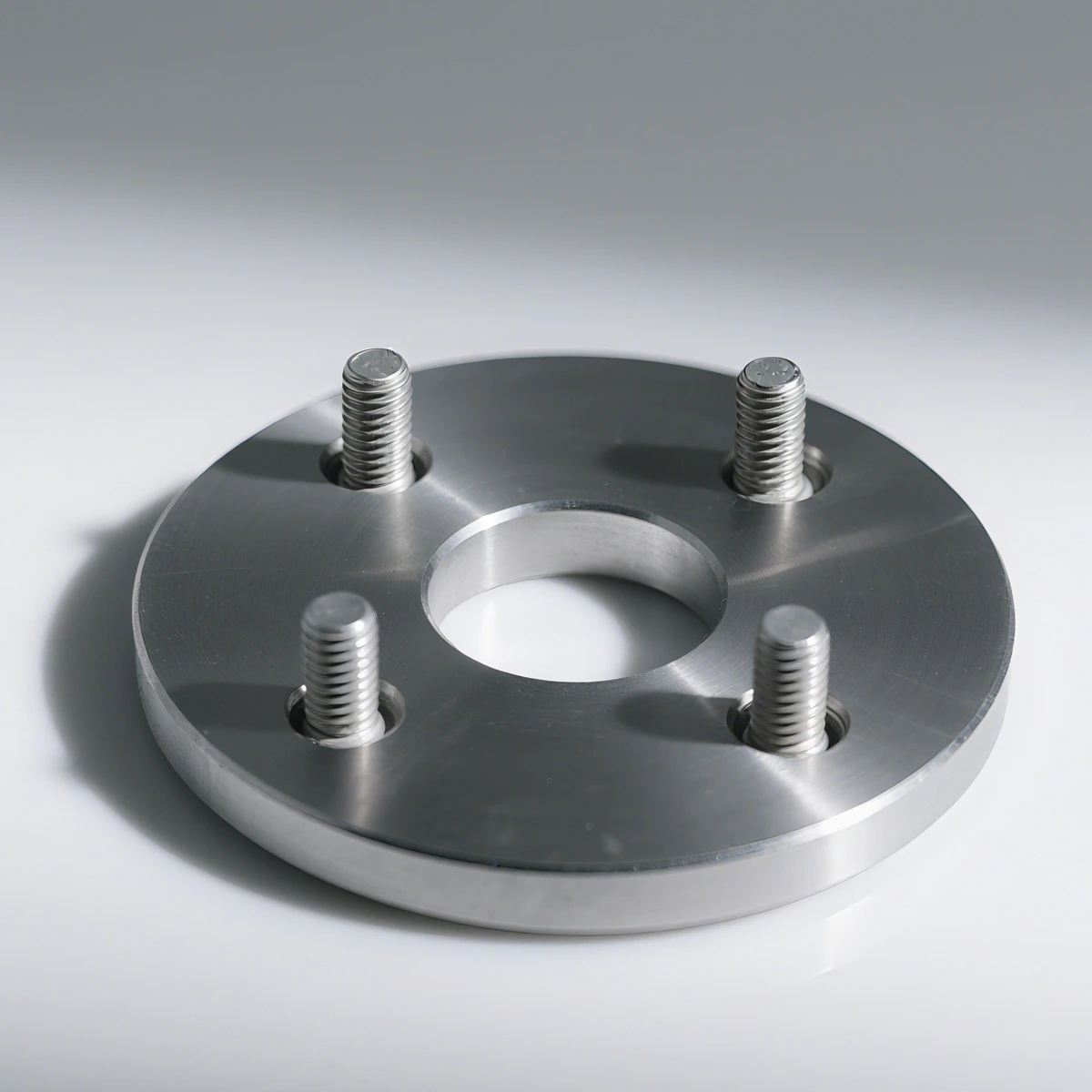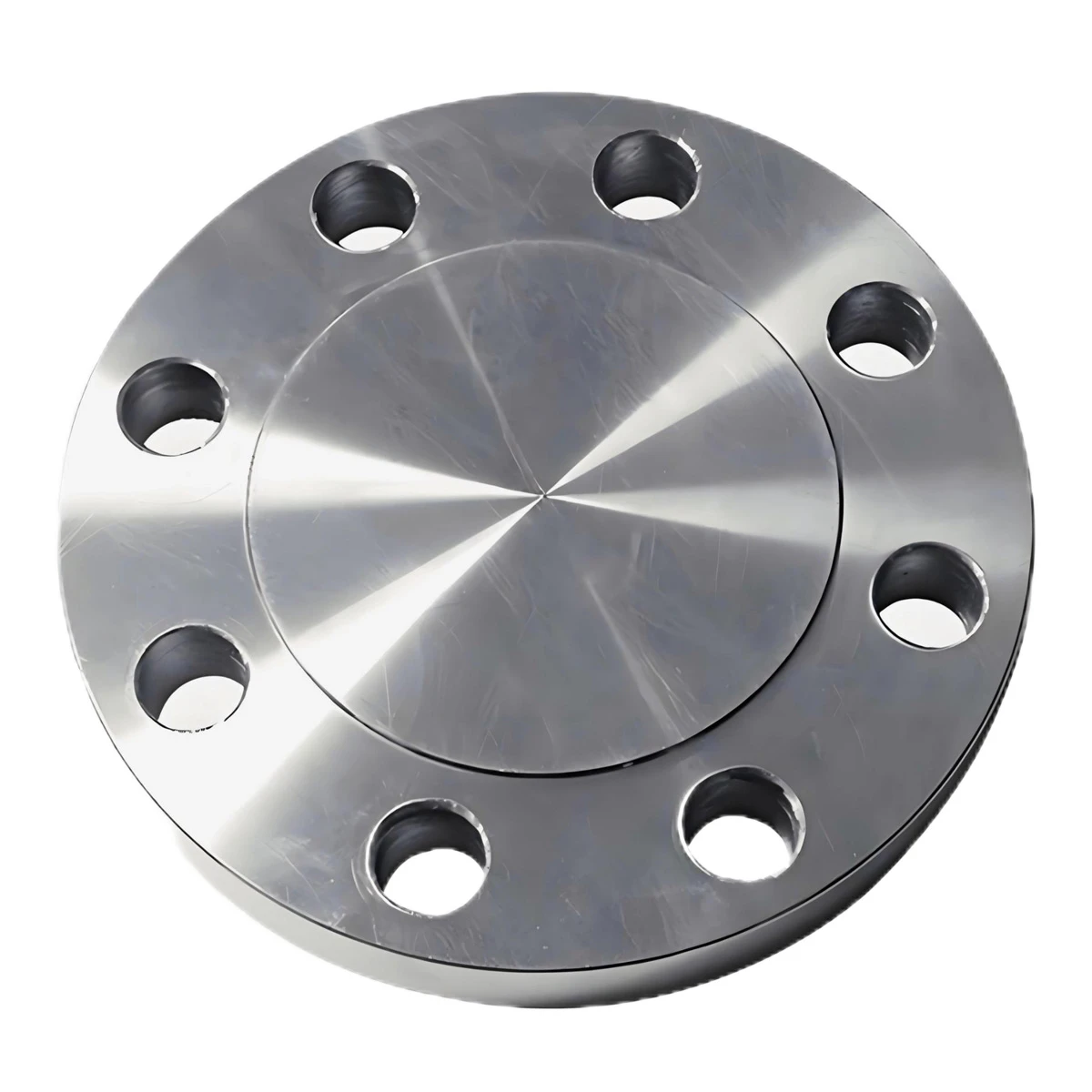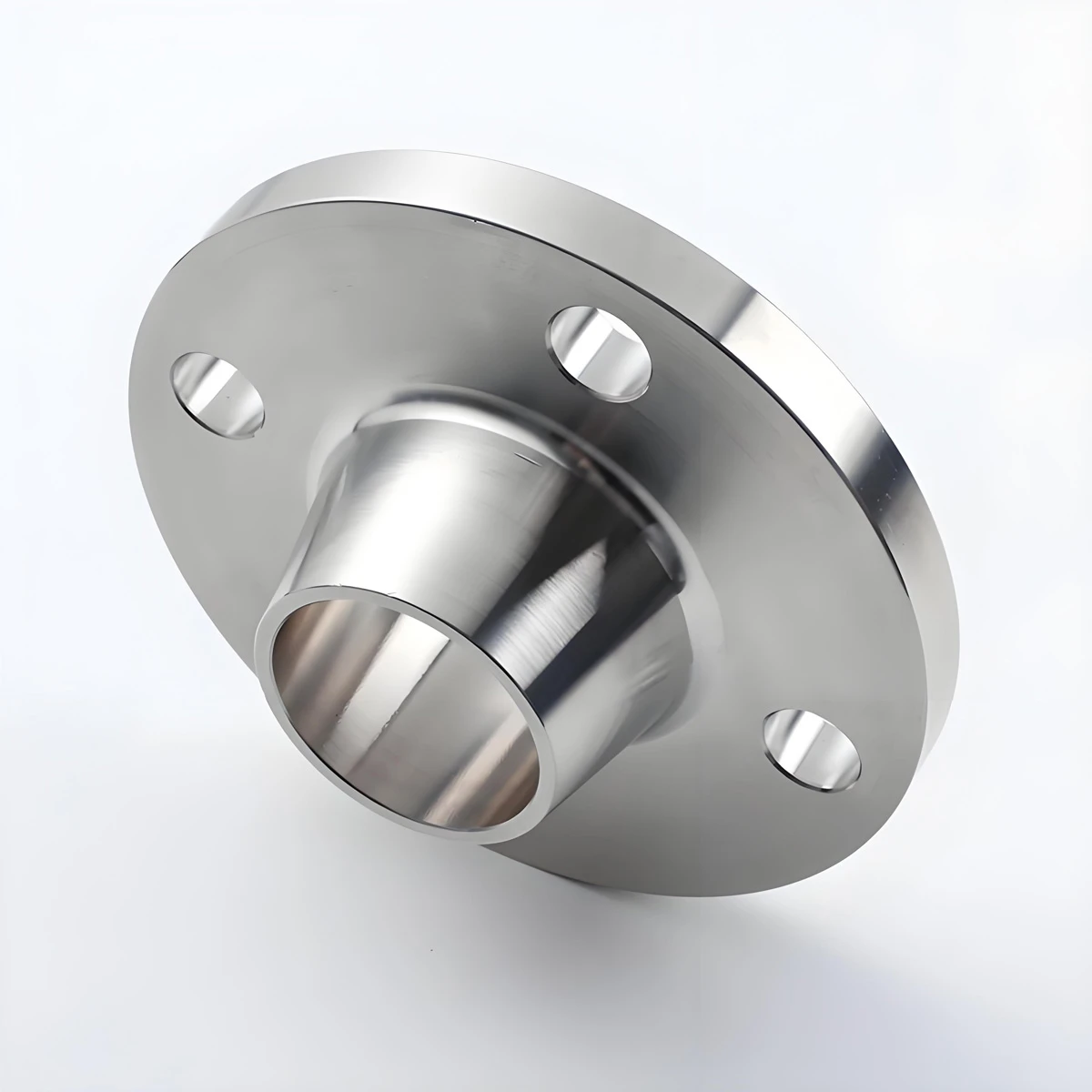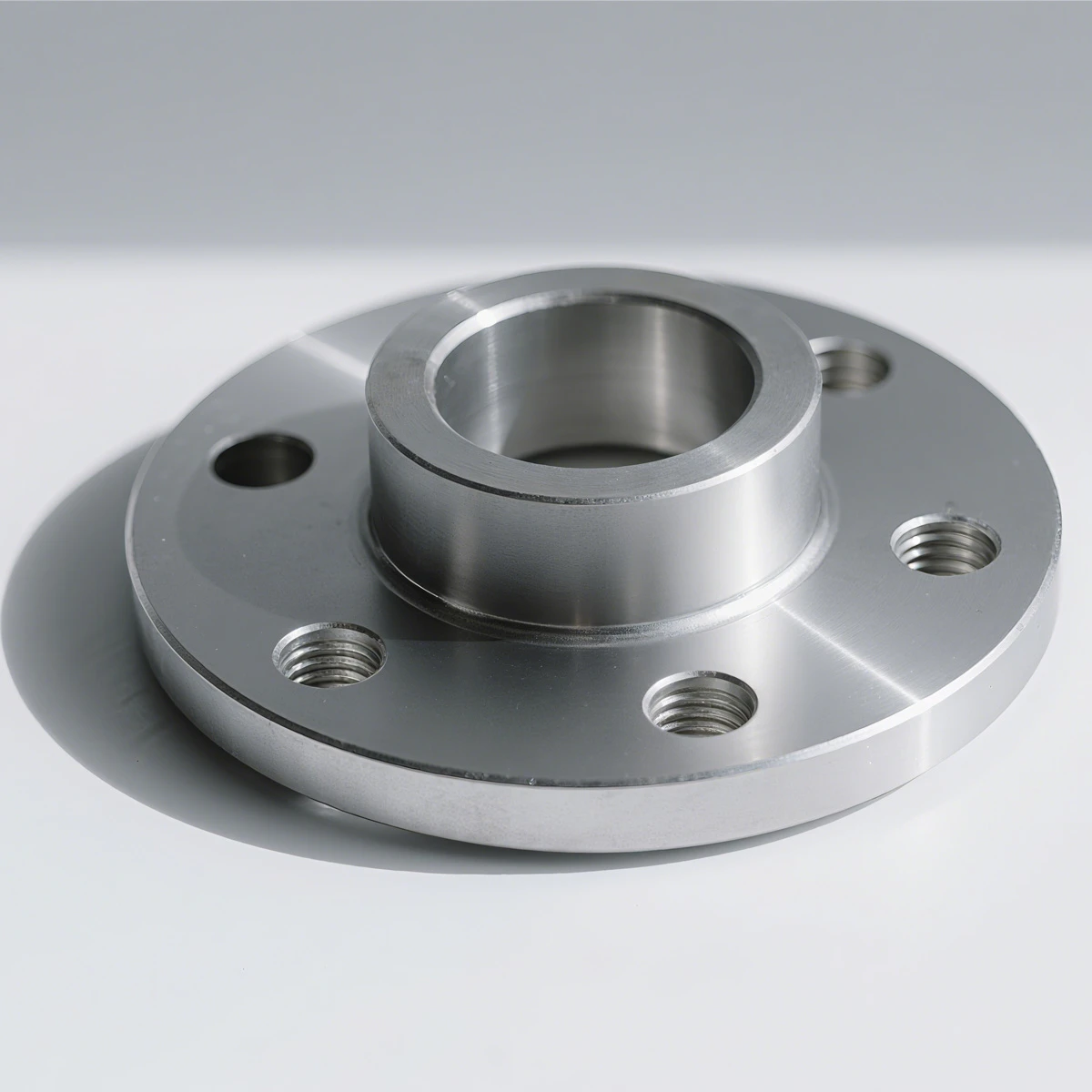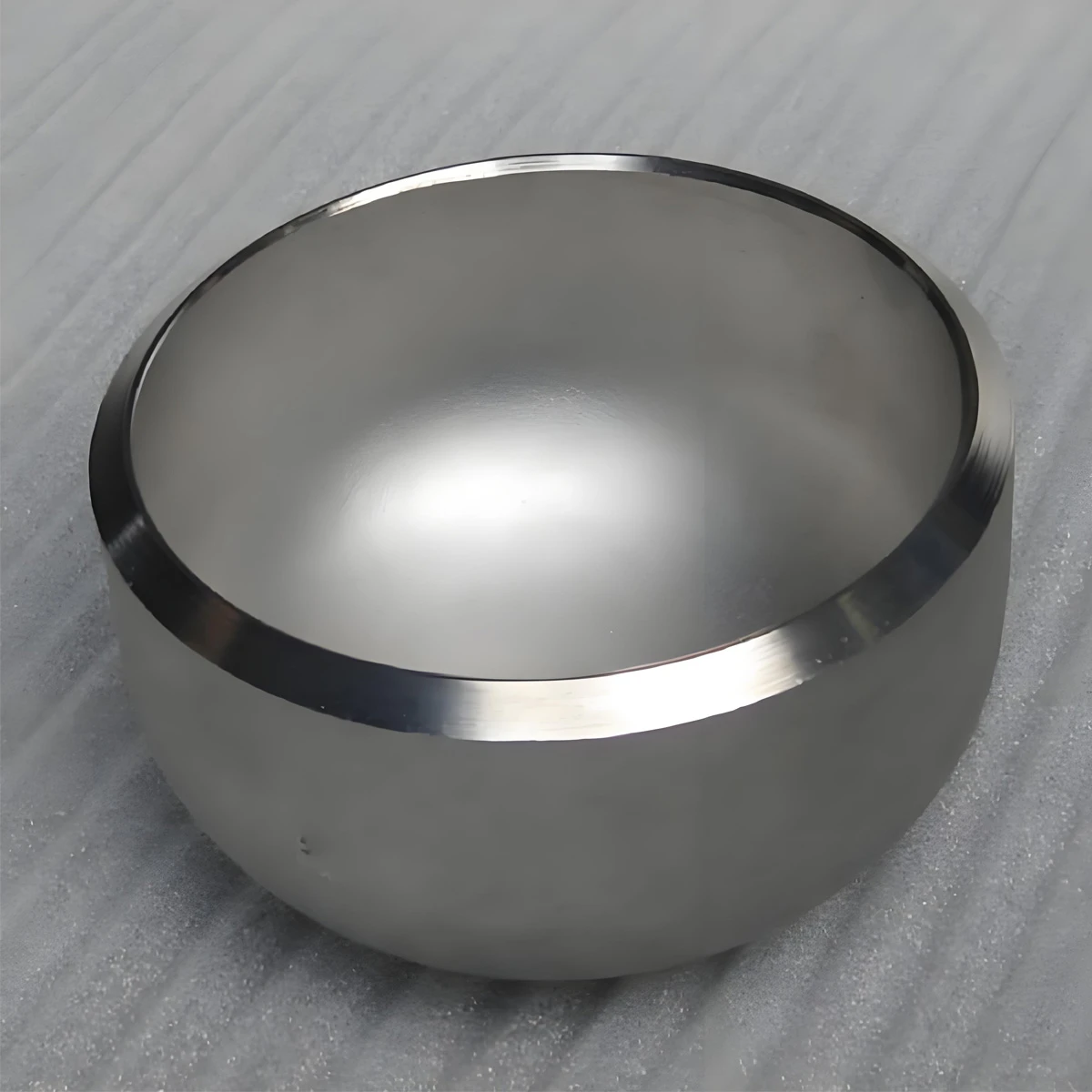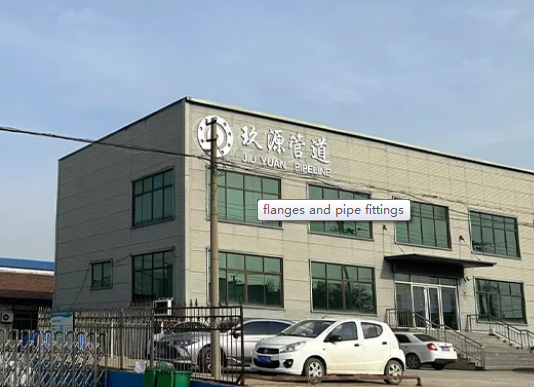A threaded flange is a type of pipe flange that features internal threads, allowing it to be screwed onto a pipe with matching external threads, eliminating the need for welding. This design makes threaded flanges ideal for situations where welding is not possible or desired, such as in sensitive environments or when working with small-diameter pipes.
|
Threaded Flange |
|
Description:Threaded Flange |
|
PN/CLASS:PN6 - PN40/ Class150 - Class2500 |
|
DN/INCH:Dn10 - DN2000/ ½In - 24In/S.A 12In - 60In |
|
MAR:CS(ASTM A105P235GH/P245GH/P250GH/P265GH/ST37-2)SS(ASTM A182/304/306) |
|
STD: ASME/EN/JIS/DIN/BS/KS/GOST/SABS/ATK |
|
Surface Coating:Black paint/Galvanize/Grease/Epoxy paint |
|
Suitable for use in fire-protection applications, these flanges are brittle and can be quickly opened with the strike of a sledge hammer. Bolt two flanges of the same size together with a gasket (sold separately) to create an access point within a line. Use in noncorrosive environments. |
A threaded flange is a type of pipe flange that features internal threads, allowing it to be screwed onto a pipe with matching external threads, eliminating the need for welding. This design makes threaded flanges ideal for situations where welding is not possible or desired, such as in sensitive environments or when working with small-diameter pipes. Threaded flanges are often used in high-pressure systems, where they provide a secure and leak-proof connection without compromising the integrity of the pipe. They are available in various materials, including carbon steel, stainless steel, and alloy steel, to ensure durability and resistance to corrosion. With the ability to provide reliable sealing without the need for welding equipment, threaded flanges offer significant advantages in ease of installation, especially in hazardous or restricted areas. These flanges are commonly used in industries like chemical processing, oil and gas, and pharmaceuticals, where non-welded connections are required for safety and operational efficiency.
Threaded flanges are widely used in industries where welding is not feasible or desired, providing a secure and reliable connection without the need for high-temperature welding. These flanges are ideal for small-diameter pipes and high-pressure systems in industries such as oil and gas, chemical processing, water treatment, and pharmaceuticals. Threaded flanges are particularly useful in applications involving corrosive or hazardous fluids, where welding could compromise material integrity or safety. They allow for easy installation and maintenance, especially in environments with limited access or when working with materials that are sensitive to heat. Because they do not require welding, threaded flanges are also advantageous for situations where frequent disassembly or reconfiguration of the piping system is necessary. They are often used in temporary connections, instrumentation piping, and pressure testing applications, offering a cost-effective and time-saving solution in various industries.
What is a threaded flange?
A threaded flange is a type of flange that has internal threads on the inside diameter, allowing it to be screwed directly onto a pipe or fitting that has corresponding external threads. This type of flange is typically used when welding is not possible or not desired, and it allows for easy disassembly and reassembly.
Here are some key points about threaded flanges:
Connection Method: Threaded flanges do not require welding for attachment to a pipe. Instead, they are screwed into place using threads. This makes them ideal for situations where welding could be challenging, such as with thin-walled pipes or in environments where welding is not feasible.
Materials: They can be made from various materials, including steel, stainless steel, and alloy metals, depending on the application and the pipe material they are being connected to.
Applications: Threaded flanges are commonly used in low-pressure systems, as they are not as strong as welded flanges. They are often seen in applications like chemical processing, water systems, or where pipe disassembly and reassembly are frequent.
Benefits: Threaded flanges are advantageous for situations where welding is not preferred, and they offer ease of installation and removal. They are also useful in systems where the pipe or equipment might need to be frequently disconnected or replaced.
Limitations: These flanges are generally not used for high-pressure systems or environments where high mechanical strength is required, as threaded connections can be weaker than welded ones.
